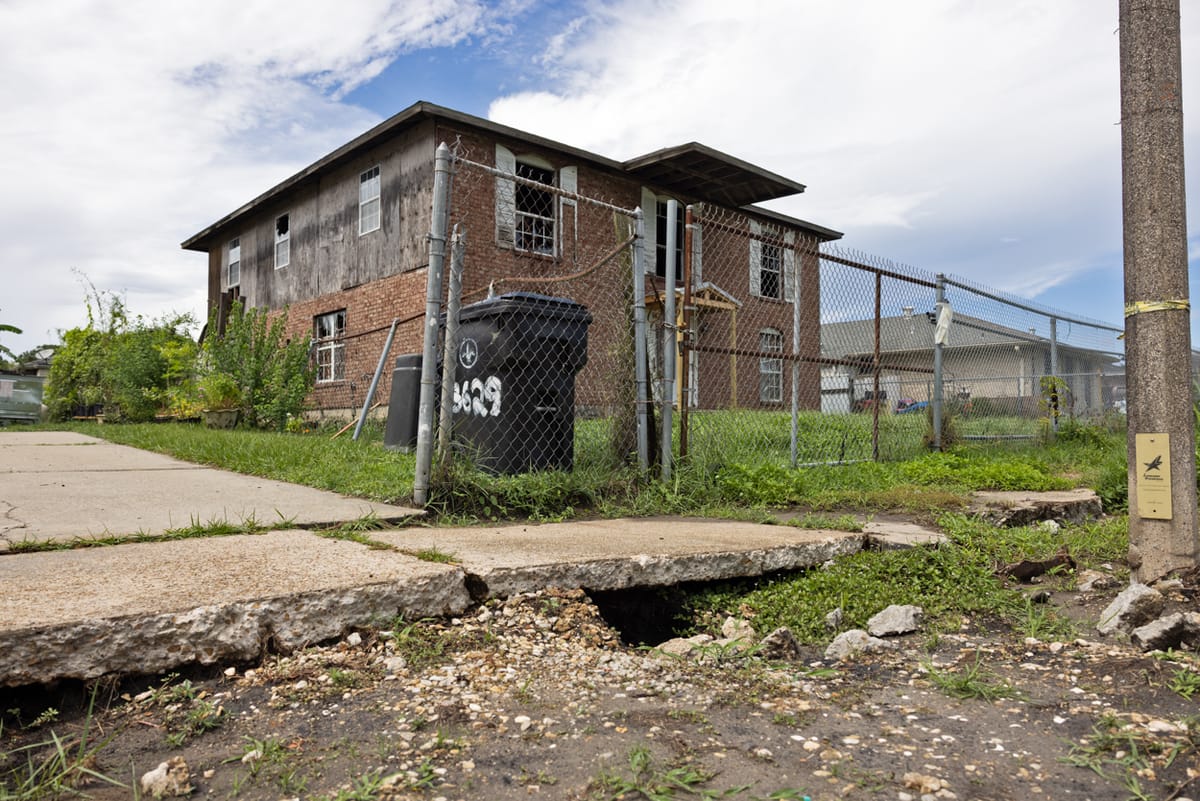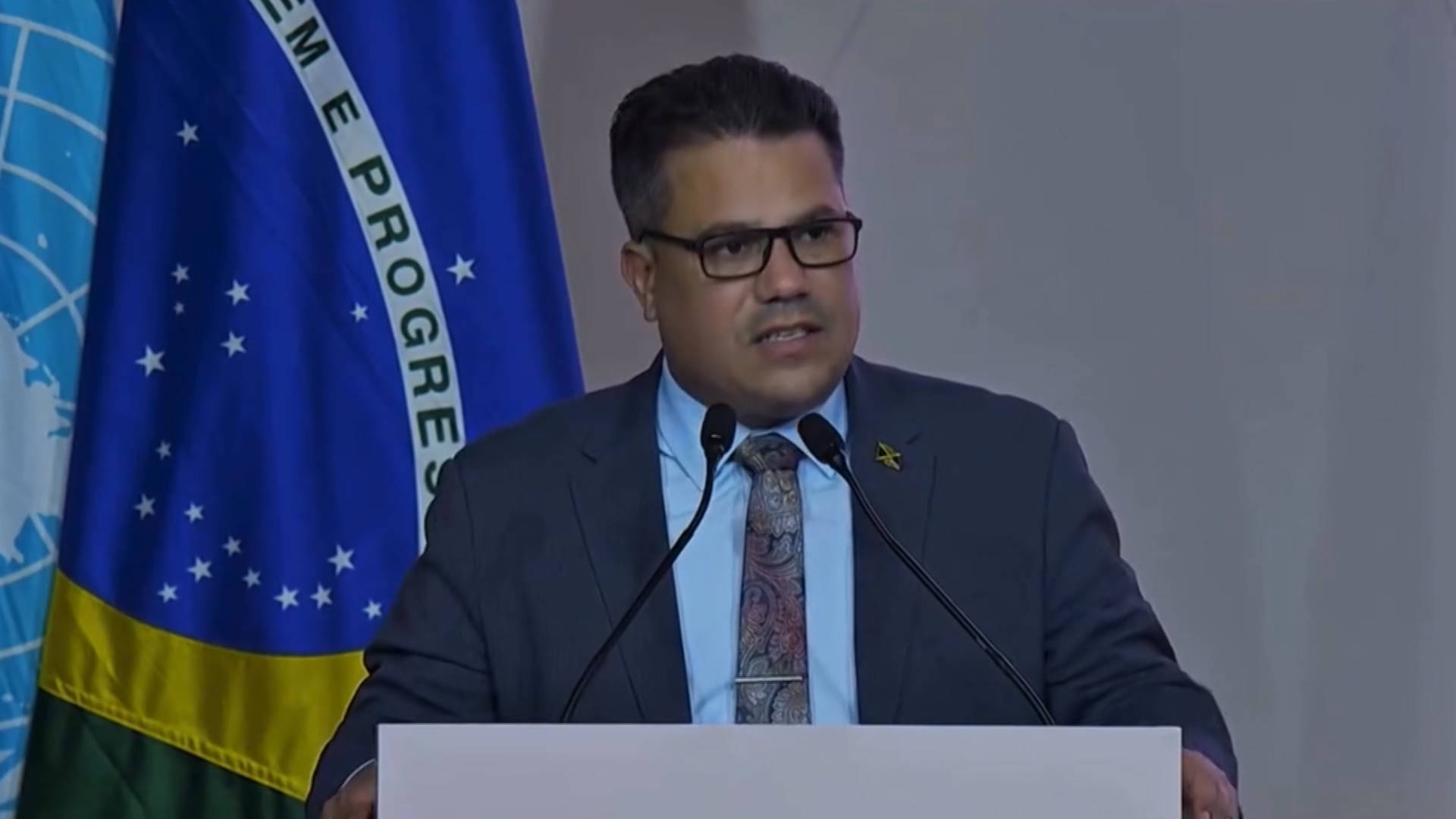Sinking grounds, rising challenges: Climate adaptation in New Orleans – Brookings

Report on Climate Adaptation and Sustainable Development in Post-Katrina New Orleans
1.0 Introduction: Climate Resilience and the Sustainable Development Goals
Effective community recovery from climate-related disasters, such as hurricanes, necessitates a strategic approach grounded in past lessons, present realities, and future challenges. This process, known as climate adaptation, is fundamental to achieving the United Nations Sustainable Development Goals (SDGs). For metropolitan New Orleans, the two decades following Hurricane Katrina have been a period of intensive adaptation, with efforts directly contributing to several key SDGs.
- SDG 11 (Sustainable Cities and Communities): Efforts focus on making the urban environment inclusive, safe, resilient, and sustainable, particularly in the face of climate-related disasters (Target 11.5).
- SDG 13 (Climate Action): All initiatives are fundamentally aimed at strengthening resilience and adaptive capacity to climate-related hazards and natural disasters (Target 13.1).
2.0 The Challenge of Climate Change in the New Orleans Metropolitan Area
The multifaceted impacts of climate change present direct and indirect challenges to the region’s sustainability and development. These challenges threaten progress across multiple SDGs.
2.1 Direct and Indirect Impacts
- Direct Environmental Impacts: Increased frequency and intensity of floods, heatwaves, hurricanes, and droughts directly threaten lives and infrastructure, undermining SDG 11 and SDG 13.
- Socioeconomic Consequences: A cascade of secondary challenges emerges, including rising flood insurance rates, complex building permit reforms, climate-induced migration, and coastal land loss. These factors impact economic stability and social equity, touching upon SDG 1 (No Poverty) and SDG 10 (Reduced Inequalities).
- Resource Insecurity: Threats to clean water and food supplies create insecurities that directly challenge the achievement of SDG 6 (Clean Water and Sanitation) and SDG 2 (Zero Hunger).
3.0 Climate Adaptation Initiatives in New Orleans
In response to these challenges, the city of New Orleans and its surrounding parishes have implemented innovative solutions that align with a sustainable development framework. These initiatives demonstrate a commitment to building a resilient future.
3.1 Key Areas of Adaptation and SDG Alignment
- Sustainable Infrastructure and Water Management: The deployment of bioswales, managed stormwater runoff systems, and amphibious architecture directly addresses flood risk. This work is critical for SDG 6, SDG 9 (Industry, Innovation, and Infrastructure), and SDG 11.
- Clean and Resilient Energy: The use of compact fluorescent lamps and the development of solar-powered “Community Lighthouses” provide resilient power sources, advancing SDG 7 (Affordable and Clean Energy) and enhancing community safety under SDG 11.
- Urban Green Restoration: Efforts to restore the urban canopy and green spaces contribute to SDG 15 (Life on Land) by protecting terrestrial ecosystems, while also mitigating urban heat and managing stormwater, supporting SDG 11 and SDG 13.
- Housing Security: Initiatives to secure housing in a high-risk environment are fundamental to achieving SDG 11.1, which calls for access to adequate, safe, and affordable housing.
- Workforce Development: Creating employment opportunities in climate-adaptation professions supports SDG 8 (Decent Work and Economic Growth) by fostering a green economy and providing sustainable livelihoods.
4.0 Recommendations for Advancing Sustainable Development
Building upon the progress achieved to date, the following recommendations are proposed to further integrate climate adaptation with the Sustainable Development Goals.
- Enact Regional Tree Restoration Programs: Implement large-scale urban forestry initiatives to enhance biodiversity, improve air quality, and mitigate urban heat island effects, thereby advancing SDG 15, SDG 13, and SDG 11.
- Develop Pathways for Innovative and Sustainable Building: Streamline the permitting process for climate-resilient and sustainable building designs, backed by reformed flood insurance models. This will promote resilient infrastructure and housing in line with SDG 9 and SDG 11.
- Expand Local Clean Energy and Workforce Programs: Increase support for localized, renewable energy solutions and create dedicated workforce development programs to build a skilled labor force for the green economy, directly supporting SDG 7 and SDG 8.
Analysis of Sustainable Development Goals in the Article
1. Which SDGs are addressed or connected to the issues highlighted in the article?
-
SDG 13: Climate Action
The entire article is centered on climate adaptation strategies in New Orleans to cope with the effects of climate change, such as hurricanes and floods. It explicitly mentions “climate adaptation,” “climate change,” and actions taken to “adjust and prepare for the observable and predicted effects of climate change.”
-
SDG 11: Sustainable Cities and Communities
The article focuses on urban resilience in “the city of New Orleans and its surrounding parishes.” It discusses solutions for urban challenges like flooding, housing, and power, including “urban green restoration,” “increased housing security,” “amphibious architecture,” and making communities places that can “persevere.”
-
SDG 7: Affordable and Clean Energy
The article highlights the use of clean energy solutions to build resilience. It specifically mentions the use of “compact fluorescent lamps and solar powered Community Lighthouses to provide resilient light and power” and recommends enabling “more local clean energy options.”
-
SDG 6: Clean Water and Sanitation
The article discusses water management as a key part of climate adaptation. It mentions challenges related to “clean water” and solutions like “bioswales” and “managed stormwater runoffs” to cope with flooding and improve water management within the urban environment.
-
SDG 8: Decent Work and Economic Growth
The article connects climate adaptation to economic opportunities by mentioning “workforce development initiatives in climate-adaptation professions” and recommending “dedicated workforce development programs” to support clean energy options.
2. What specific targets under those SDGs can be identified based on the article’s content?
-
Target 13.1: Strengthen resilience and adaptive capacity to climate-related hazards and natural disasters in all countries.
- The article is a case study of New Orleans’ efforts to recover from Hurricane Katrina and build resilience against future climate-related disasters. The implementation of “bioswales,” “managed stormwater runoffs,” and “amphibious architecture” are direct examples of strengthening adaptive capacity.
-
Target 11.5: By 2030, significantly reduce the number of deaths and the number of people affected and substantially decrease the direct economic losses relative to global gross domestic product caused by disasters, including water-related disasters, with a focus on protecting the poor and people in vulnerable situations.
- The article’s focus on mitigating flood risks in the aftermath of Hurricane Katrina, which caused catastrophic loss of life and economic damage, directly aligns with this target. The report series aims to provide tools to “mitigate future disaster risks for the most vulnerable communities.”
-
Target 11.b: By 2020, substantially increase the number of cities and human settlements adopting and implementing integrated policies and plans towards inclusion, resource efficiency, mitigation and adaptation to climate change, disaster risk resilience.
- The article documents how “the city of New Orleans and its surrounding parishes have deployed ingenuity and passion” to embrace climate adaptation, detailing a range of integrated policies and projects from green infrastructure to energy resilience.
-
Target 7.2: By 2030, increase substantially the share of renewable energy in the global energy mix.
- The mention of “solar powered Community Lighthouses” and the recommendation to “enable more local clean energy options” directly support the goal of increasing the share of renewable energy to build a more resilient power system.
-
Target 6.6: By 2020, protect and restore water-related ecosystems, including mountains, forests, wetlands, rivers, aquifers and lakes.
- The implementation of “urban green restoration” and “bioswales” are methods to restore the natural water cycle within an urban ecosystem, manage stormwater, and mitigate flooding, thereby contributing to the health of water-related ecosystems.
-
Target 8.2: Achieve higher levels of economic productivity through diversification, technological upgrading and innovation, including through a focus on high-value added and labour-intensive sectors.
- The call for “workforce development initiatives in climate-adaptation professions” points to creating new, specialized jobs in an innovative, high-value sector (the green economy), which contributes to economic diversification and productivity.
3. Are there any indicators mentioned or implied in the article that can be used to measure progress towards the identified targets?
-
Indicator 13.1.2 / 11.b.2: Number of local governments that have adopted and implemented local disaster risk reduction strategies.
- The article itself serves as documentation of such a strategy being implemented by “the city of New Orleans and its surrounding parishes.” Progress can be measured by tracking the specific initiatives mentioned, such as the enactment of “regional tree restoration programs” or the development of “innovative and sustainable building permits.”
-
Implied Indicator: Share of renewable energy in community facilities.
- The mention of “solar powered Community Lighthouses” implies that progress can be measured by the number of such installations and the total renewable energy capacity added to the local grid, which directly relates to Target 7.2.
-
Implied Indicator: Area of land converted to green infrastructure.
- Progress towards Target 6.6 can be measured by the square footage or acreage of “bioswales” and other “urban green restoration” projects implemented to manage stormwater and reduce flood risk.
-
Implied Indicator: Number of people trained or employed in climate-adaptation professions.
- The recommendation for “dedicated workforce development programs” implies a measurable outcome: the number of individuals who receive training and find employment in the green economy, which would be an indicator for Target 8.2.
-
Implied Indicator: Number of new building permits issued that meet sustainable and resilient standards.
- The recommendation to “develop pathways for more innovative and sustainable building permits backed by flood insurance” suggests that a key metric for progress under Target 11.5 would be the adoption rate of these new, more resilient building codes.
4. Summary Table of SDGs, Targets, and Indicators
| SDGs | Targets | Indicators (Mentioned or Implied in Article) |
|---|---|---|
| SDG 13: Climate Action | 13.1: Strengthen resilience and adaptive capacity to climate-related hazards and natural disasters. | 13.1.2: Number of local governments (New Orleans) that have adopted and implemented local disaster risk reduction strategies. |
| SDG 11: Sustainable Cities and Communities | 11.5: Significantly reduce the number of people affected and economic losses from disasters. 11.b: Increase the number of cities implementing integrated policies for climate adaptation and disaster risk resilience. |
Implied: Number of sustainable building permits issued. 11.b.2: Proportion of local governments (New Orleans) that adopt and implement local disaster risk reduction strategies. |
| SDG 7: Affordable and Clean Energy | 7.2: Increase substantially the share of renewable energy in the global energy mix. | Implied: Number of “solar powered Community Lighthouses” and other local clean energy installations. |
| SDG 6: Clean Water and Sanitation | 6.6: Protect and restore water-related ecosystems. | Implied: Area of land dedicated to “bioswales” and “urban green restoration” projects. |
| SDG 8: Decent Work and Economic Growth | 8.2: Achieve higher levels of economic productivity through diversification and innovation. | Implied: Number of people trained and employed through “workforce development programs” in climate-adaptation professions. |
Source: brookings.edu

What is Your Reaction?
 Like
0
Like
0
 Dislike
0
Dislike
0
 Love
0
Love
0
 Funny
0
Funny
0
 Angry
0
Angry
0
 Sad
0
Sad
0
 Wow
0
Wow
0










































































